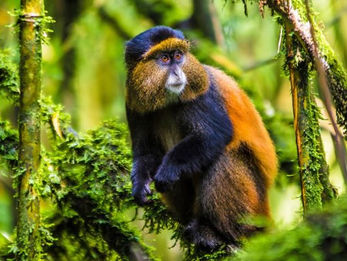

WELCOME TO GLOBETROTTERS SAFARI
My name is Jennifer Pickles and I’m the founder and visionary behind Globetrotters Safari, where every journey is designed with heart, precision, and a deep love for Africa.
We specialize in creating custom African safaris that go far beyond the ordinary — blending authentic cultural experiences with awe-inspiring wildlife encounters, all wrapped in comfort and style.
Every itinerary we craft is a reflection of your unique interests, guided by our first-hand knowledge of Africa’s most breathtaking landscapes and hidden gems.
Whether you're dreaming of a private Big Five safari, a luxury tented camp under the stars, or an immersive cultural journey through vibrant local communities — we bring your vision to life with meticulous attention to detail.
Let us turn your dream safari into reality.
With Globetrotters Safari, every journey is personal, every detail intentional, and every memory unforgettable.

50+
TRIPS BOOKED
15+
YEARS OF
WORK EXPERIENCE
200+
WORLDWIDE TRAVEL PARTNERS

AFRICAN SAFARIS
Embark on an unforgettable journey through the captivating landscapes of Eastern and Southern Africa.
Whether you find yourself in Tanzania, marveling at the world's largest intact ecosystem, trekking with gorillas in Uganda/Rwanda, or indulging in the delights of South Africa's wine, golf, and safari experiences, you're in for an extraordinary adventure.
Join us for a meticulously crafted tour that promises to be life-changing, offering you the opportunity to immerse yourself in the rich tapestry of African scenery, wildlife, and cultures amidst some of nature's most remarkable habitats.
Accompanied by our affable, expert guides, fluent in English and brimming with years of experience, you'll be treated to personalized attention and a wealth of knowledge throughout your journey.
Your satisfaction is paramount to us, as we pride ourselves on ensuring that every aspect of your trip fulfills your desires.
Come as our esteemed guests and leave as cherished friends.


ACTIVITIES
A safari offers the unparalleled opportunity to observe Africa's remarkable wildlife thriving in their natural environments.
Yet, your adventure doesn't have to end there.
Enhance your visit with a diverse array of activities tailored to your interests.
From immersive walking or horseback safaris to leisurely golf outings or indulgent wine tours, the possibilities are endless.
Additionally, venture off the beaten path with side trips to explore hidden gems, adding depth and richness to your African experience.
If your preferred activity isn't listed, don't hesitate to inquire, as we cater to almost any interest to ensure a truly unforgettable adventure.


ZANZIBAR AND PEMBA ISLAND
Embark on a journey to the captivating azure waters and luxurious hideaways of Zanzibar or Pemba Island in the Indian Ocean.
Whether you crave the tranquility of pristine beaches or wish to delve into the vibrant cultural fabric of these islands, they promise an unforgettable experience.
Zanzibar boasts a cultural legacy spanning centuries, epitomized by Stone Town, renowned for its distinctive architecture shaped by Arabic and Portuguese influences.
Nestled just off the Zanzibar coast, Pemba Island awaits those seeking romantic seclusion or a blissful escape.
Untouched and radiating natural beauty, Pemba Island's landscapes boast lush forests, tranquil swamps, mangroves, and secluded beaches.
Pemba Island is a haven for beach lovers and water enthusiasts, offering opportunities for relaxation on its shores or exploration of its mesmerizing turquoise waters through snorkeling and diving adventures.

Discover the Advantages of Working with a Travel Advisor
When it comes to certain endeavors, like medical procedures or significant investments, taking matters into your own hands can be risky. Similarly, navigating the complexities of international travel is safest and most enjoyable with the guidance of experienced professionals who can ensure a seamless and rewarding adventure.


Join Our Email List
Sign up to receive travel inspiration and opportunities. Unsubscribe at any time. We will never share your information.



kind words from our clients
"Globetrotters’ commitment to delivering an unparalleled experience shines through in every aspect of their service. It’s this dedication to excellence and a deep understanding of what makes a safari truly special that sets them apart. They don’t just promise an adventure; they deliver a gateway to unforgettable memories."
-
Jack, Oregon




















